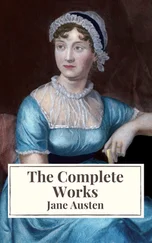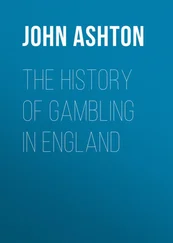John Ashton - The Fleet. Its Rivers, Prison, and Marriages
Здесь есть возможность читать онлайн «John Ashton - The Fleet. Its Rivers, Prison, and Marriages» — ознакомительный отрывок электронной книги совершенно бесплатно, а после прочтения отрывка купить полную версию. В некоторых случаях можно слушать аудио, скачать через торрент в формате fb2 и присутствует краткое содержание. Жанр: foreign_antique, foreign_prose, на английском языке. Описание произведения, (предисловие) а так же отзывы посетителей доступны на портале библиотеки ЛибКат.
- Название:The Fleet. Its Rivers, Prison, and Marriages
- Автор:
- Жанр:
- Год:неизвестен
- ISBN:нет данных
- Рейтинг книги:4 / 5. Голосов: 1
-
Избранное:Добавить в избранное
- Отзывы:
-
Ваша оценка:
- 80
- 1
- 2
- 3
- 4
- 5
The Fleet. Its Rivers, Prison, and Marriages: краткое содержание, описание и аннотация
Предлагаем к чтению аннотацию, описание, краткое содержание или предисловие (зависит от того, что написал сам автор книги «The Fleet. Its Rivers, Prison, and Marriages»). Если вы не нашли необходимую информацию о книге — напишите в комментариях, мы постараемся отыскать её.
The Fleet. Its Rivers, Prison, and Marriages — читать онлайн ознакомительный отрывок
Ниже представлен текст книги, разбитый по страницам. Система сохранения места последней прочитанной страницы, позволяет с удобством читать онлайн бесплатно книгу «The Fleet. Its Rivers, Prison, and Marriages», без необходимости каждый раз заново искать на чём Вы остановились. Поставьте закладку, и сможете в любой момент перейти на страницу, на которой закончили чтение.
Интервал:
Закладка:
As we know, Henry VIII. put an end to the Monastic Orders in England, and, at the dissolution of the Priory, the reversion of the site, and house thereof, was granted, on April 14, 1545, 22 22 Pat. 36 Henry VIII. p. 13, m. 31.
to Sir Roger North, in fee, together with "all that the Head and original Well Spring of one Channel or Aqueduct situate and being in a certain field in the parish of Islington" – and it also gave, all the channels, aqueducts, and watercourses under ground "up to the site of the said House of the Carthusians."
But, although the spring might, and did, supply the Charter House, yet it is possible that the Conduit House, from which it got the name of White Conduit, from its being built of white stone – was built by Thomas Sutton, who founded the Hospital of the Charter House, – in 1611. It was either built by him, or repaired in 1641, for, incorporated in the building, was a stone containing his arms – and initials. 23 23 See next page.
The other initials have not been identified. As the "White Conduit" it was known well into this century, but it fell somewhat into decay, about 1812 – was never repaired, and, finally, was pulled down in 1831 – to make way for the completion of some new buildings in Barnsbury Road, as a continuation of Penton Street: and the stone was broken up, and used in making the New Road.
So much for the Conduit itself; but it, although inert, exercised a large share in the amusements of Londoners down to a comparatively recent period. It was pleasantly situated in the fields, and, until this century, during the latter half of which, the modern Babylon has become one huge mass of bricks and mortar, it served as a pleasant place of recreation for the Cits. There was an uninterrupted prospect of Hampstead and Highgate – which bounded the northern view, and which was purely pastoral, with the exception of sparsely-dotted farmhouses. There is a tradition that, on the site of the comparatively modern White Conduit House , was (in the reign of Charles I.), a tavern in the course of erection, and that, being finished, the workmen were carousing at the very moment of the monarch's decapitation.
Doubtless, in these suburban fields, there was, for very many years, a place for refreshment, which probably took the form, in the Arcadian age of the seventeenth and eighteenth century, of new milk, curds and whey, and syllabubs, for Islington was famous for its dairy produce, 24 24 In an early sixteenth century book (unique) printed by Wynkyn de Worde, called "Cocke Lorelles Boke" the dairy farming at Islington is mentioned — "Also mathewe to the drawer of London, And sybly sole mylke-wyfe of Islington."
as we know by the account of the entertainment given to Queen Elizabeth at Kenilworth Castle in 1575 by the Earl of Leicester, when the Squier Minstrel of Middlesex made a long speech in praise of Islington, whose motto was said to be, "Lactis Caseus infans."
The earliest really authentic notice of the White Conduit House, I can find, is in the Daily Advertiser August 10, 1754. "This is to acquaint the public, that, at the White Conduit House, the proprietor, for the better accommodation of the gentlemen and ladies, has completed a long walk, with a handsome circular Fish-pond, a number of shady, pleasant arbours inclosed with a fence 7 feet high to prevent being the least incommoded from the people in the fields. Hot loaves, 25 25 These Rolls were as famous as Chelsea Buns. "White Conduit loaves" being a familiar street cry.
and butter every day, milk directly from the Cows; coffee and tea, and all manners of liquors in the greatest perfection: also a handsome Long Room, from whence is the most Copious prospects and airy situation of any now in vogue. I humbly hope the continuance of my friends' favours, as I make it my chief study to have the best accommodations, and am, Gentlemen and Ladies, your obliged humble servant, Robert Bartholomew. Note. My Cows eat no grains, neither any adulteration in the Milk or Cream. Bats and Balls for Cricket, and a convenient field to play in."
This gives us a very fair insight into the sober relaxations of our great-great-grandfathers: and that the White Conduit House was, about this time, a resort for harmless recreation; and, certainly, it would rejoice the modern temperance enthusiasts to find that the principal beverages there drank were "non-intoxicants." Oliver Goldsmith used frequently to go there, walking from his house at Islington; and, in his "Citizen of the World," letter 122, he writes, "After having surveyed the Curiosities of this fair and beautiful town, I proceeded forward, leaving a fair stone building on my right; here the inhabitants of London often assemble to celebrate a feast of hot rolls and butter. Seeing such numbers, each with their little tables before them, employed on this occasion, must no doubt be a very amusing sight to the looker-on, but still more so to those who perform in the Solemnity."
And the same story of simplicity of amusement, and refreshment, is amusingly told in the Gentleman's Magazine for May, 1760, vol. xxx. p. 242, in a short poem by William Woty, the author of the "Shrubs of Parnassus, consisting of a variety of poetical essays, moral and comic, by I. Copywell, of Lincoln's Inn, Esq. 1760."
" And to White Conduit House
We will go, will go, will go ."
Grub Street Register .
"Wish'd Sunday's come – mirth brightens ev'ry face,
And paints the rose upon the housemaid's cheek
Harriot , or Mol more ruddy. Now the heart
Of prentice resident in ample street,
Or alley, Kennel-wash'd Cheapside , Cornhill
Or Cranborne , thee, for calcuments renown'd,
With joy distends. His meal meridian o'er,
With switch in hand, he to White Conduit house
Hies merry hearted. Human beings here
In couples multitudinous assemble,
Forming the drollest groupe, that ever trod
Fair Islingtonian plains. Male after male,
Dog after dog, succeeding – husbands – wives —
Fathers and mothers – brothers – sisters – friends —
And pretty little boys and girls . Around,
Across, along , the garden's shrubby maze,
They walk, they sit, they stand. What crowds press on,
Eager to mount the stairs, eager to catch
First vacant bench or chair in long-room plac'd.
Here prig with prig holds conference polite,
And indiscriminate, the gaudy beau,
And sloven mix. Here he , who all the week
Took bearded mortals by the nose, or sat
Weaving dead hairs, and whistling wretched strain,
And eke the sturdy youth, whose trade it is
Stout oxen to contend, with gold bound hat,
And silken stocking strut. The red-arm'd belle
Here shews her tasty gown, proud to be thought
The butterfly of fashion: and, forsooth,
Her haughty mistress deigns for once to tread
The same unhallow'd floor. 'Tis hurry all,
And ratling cups and saucers. Waiter here,
And waiter there, and waiter here and there,
At once is call'd — Joe – Joe – Joe – Joe – Joe —
Joe on the right – and Joe upon the left,
For ev'ry vocal pipe re-ecchoes Joe .
Alas, poor Joe ! Like Francis in the play
He stands confounded, anxious how to please
The many-headed throng. But shou'd I paint
The language, humours, customs of the place,
Together with all curtsy's lowly bows,
And compliments extern, 'twould swell my page
Beyond it's limits due. Suffice it then,
For my prophetic muse to say, 'So long
As fashion rides upon the Wing of time,
While tea and cream, and buttered rolls can please,
While rival beaux, and jealous belles exist,
So long White Conduit house, shall be thy fame.
Интервал:
Закладка:
Похожие книги на «The Fleet. Its Rivers, Prison, and Marriages»
Представляем Вашему вниманию похожие книги на «The Fleet. Its Rivers, Prison, and Marriages» списком для выбора. Мы отобрали схожую по названию и смыслу литературу в надежде предоставить читателям больше вариантов отыскать новые, интересные, ещё непрочитанные произведения.
Обсуждение, отзывы о книге «The Fleet. Its Rivers, Prison, and Marriages» и просто собственные мнения читателей. Оставьте ваши комментарии, напишите, что Вы думаете о произведении, его смысле или главных героях. Укажите что конкретно понравилось, а что нет, и почему Вы так считаете.












